Illustrator Matt Smith returns to the world of Hellboy by taking on the admirable task of adapting the Mike Mignola and Christopher Golden prose novel Hellboy: The Bones of Giants into the comics medium in time for the book's 20th anniversary.
With the release of the first issue in the four-part series, The Beat's own BPRD-trainee Dean Simons conducted an email interview with the artist about getting involved in the world of Hellboy, taking on the novel, Norse mythology, and doing his own thing.
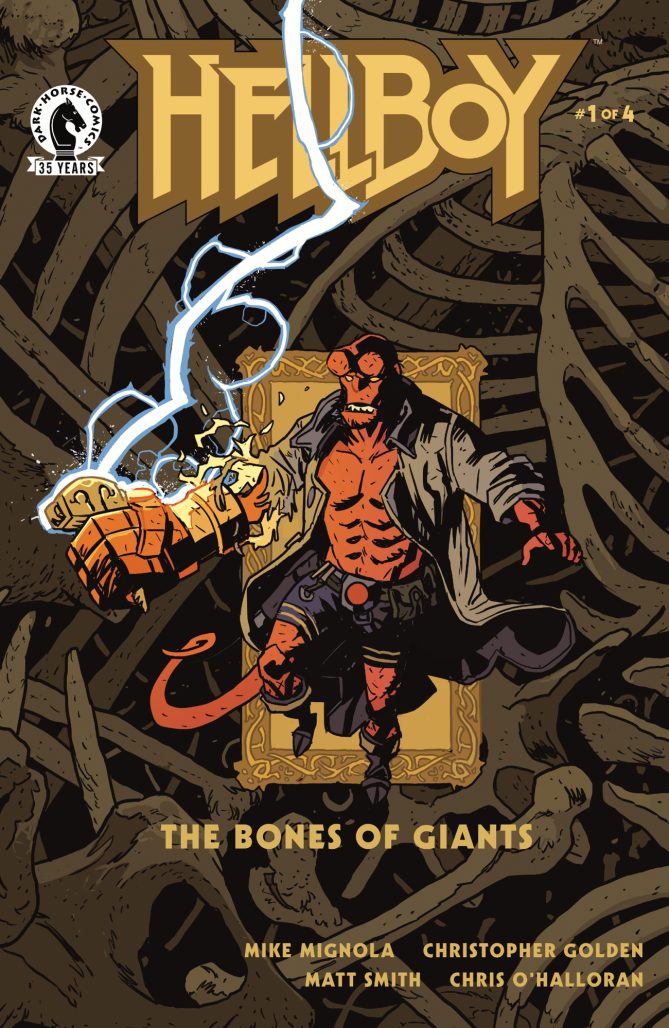
Dean Simons: I note that this isn't your first artistic foray into the world of Hellboy, do you remember how your original involvement came about?
Matt Smith: Yes, there's a short answer and a long answer to this. I'll aim for something in the middle. My involvement was thanks to Dan Brereton. Dan was very supportive of Barbarian Lord from the get-go. He asked me for some early promo copies of the book to send out to friends of his. One of those friends was Walt Simonson, who then mentioned it online, where I believe Mike [Mignola] saw it. That's my understanding of how it came to be that Mike would have been aware of my work. Then some years later, he sent me a message asking if I'd be interested in working on a short Hellboy story about an ancient Russian werewolf hunter––which turned out to be Long Night at Goloski Station. Maybe this was the long answer after all. There's a long-owed dinner for the Brereton family if I ever get out their way.
Simons: How did adapting Hellboy: The Bones of Giants occur? Did you pitch?
Smith: I didn't pitch it. I wish I was that proactive and self-assured. The way I remember it is that I went to the 2019 Boston Comic Con to have lunch with Mike, as I live about twenty minutes outside of Boston proper and he was attending the show. I was a bit nervous about it to be honest, as Goloski Station had come out and I wasn't exactly sure what he made of it. It turned out that he was okay with how it all went, and then we started talking about future possibilities, which turned out to be Hellboy: The Bones of Giants. I'm leaving out all the parts where my brain was overheating by occupying two spaces, trying to be a professional and also trying to get my head around how this conversation was happening.
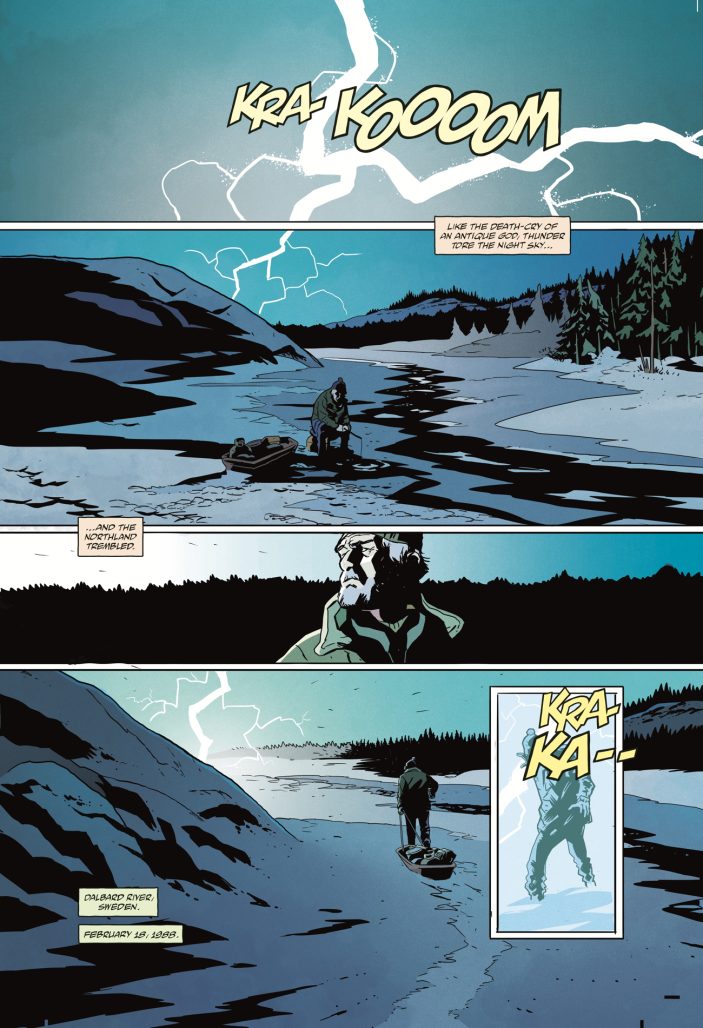
Simons: Were you a fan of the original Hellboy: The Bones of Giants novel?
Smith: Oh yes, very much. I got it pretty much right when it came out. I'd been a Hellboy fan since my friend and fellow Boston-area illustrator Mister Reusch introduced me to it around the start of the Wake the Devil series. That's when I began getting Hellboy books as they were released. I'd also been a Norse mythology fan long before that. Mythology and folklore in general, but always Norse mythology specifically. So, when I saw those worlds were combined in a novel, I was on it fast. Loved it right from the "cold open" scene, which I'm very glad made it into the adaptation. King Vold is also easily my favorite short Hellboy story, and I thought it was so cool to see the connection between that story and the Bones of Giants novel.
Simons: You have somewhat of a fascination with Norse imagery. Was this a big plus in taking on this project? What about old Norse mythology and culture interests you? Do you remember when it first made an impression on you?
Smith: Oh, for sure. Definitely a big plus. I think my initial interest in Norse mythology was due to a number of books, comics, and records I loved and grew up with. Some of my earliest comic books as a kid were the Simonson Thor comics. A little later I would have come across the heavy influence on Tolkien's work and records like those by Swedish band Bathory. There was a grim heroism to the northern myths, maybe influenced by the role of Ragnarök in Norse mythology, finding its way into these things the myths influence. That idea that everything ends in flames and has been foreseen, but nevertheless you go on as always. You have the honor of your name, that kind of thing. There's just something wonderful about the grim resolution at the heart of it, especially when combined with the stunning visual descriptions of those stories. There you have the sun-eating wolf, a thunder god in his goat-driven cart, a universe-spanning tree with a squirrel running up and down its length, carrying the insults between the eagle and serpent at either end. C'mon. Right? That's pretty good stuff.
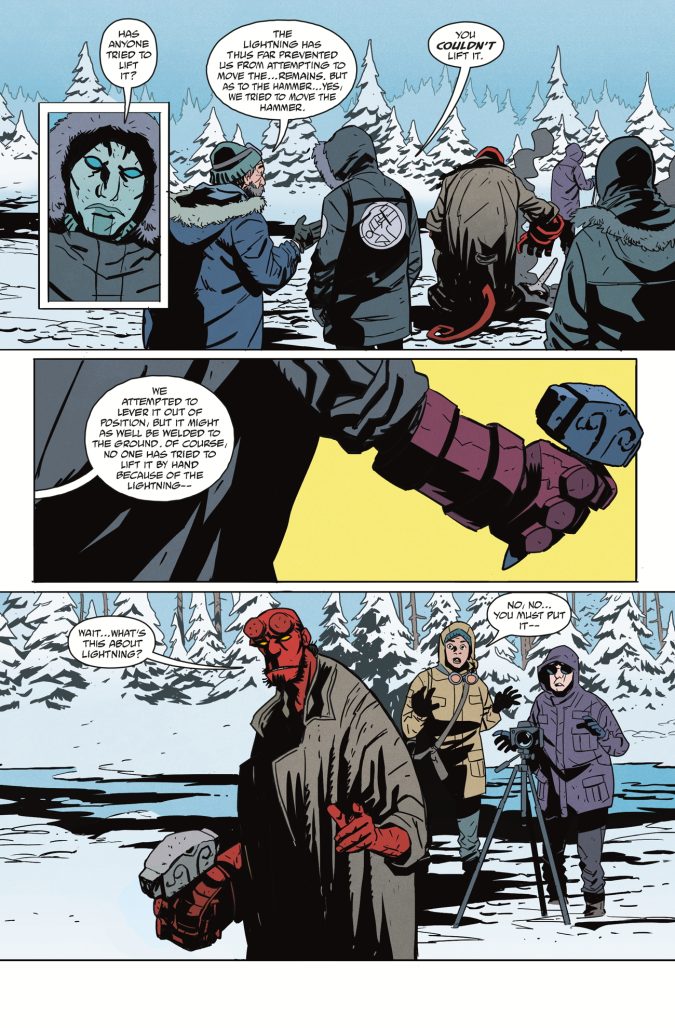
Simons: Based on the credits, it appears that the adaptation has been left completely up to you. Was it easy to figure out the adaptation for the comics medium? What was your process in condensing the 200-page prose story into a four issue miniseries?
Smith: That was definitely not the case. Christopher Golden put what I can only guess was a tremendous amount of effort into adapting the script for the different length and medium. I got four scripts from him which, knowing the original novel well, I was very impressed by. He managed to have a lean, fast-moving story that kept all of my favorite scenes from the book without losing its great atmosphere. No small order.
Simons: Did you feel at all constrained by the original material when developing the adaptation? Were there aspects you had to change to make the story work in the comics medium?
Smith: I think I can still answer this question, even given the answer to the one above. Christopher was really open about this when it came to my visuals. It was a "you can refer to this scene in the book for "x" character(s)...or don't. Do your Norse thing." I'm paraphrasing there, but that was pretty close to it. I initially did go for a different look on the hammer and maybe some other things from Mike's illustrations in the book, but after drawing so many pages, I would keep thinking of the way Mike definitively put it down and I knew it had to go back to that. Why change something that was already done the way it should be? There was enough in the story which hadn't been illustrated to sort out.
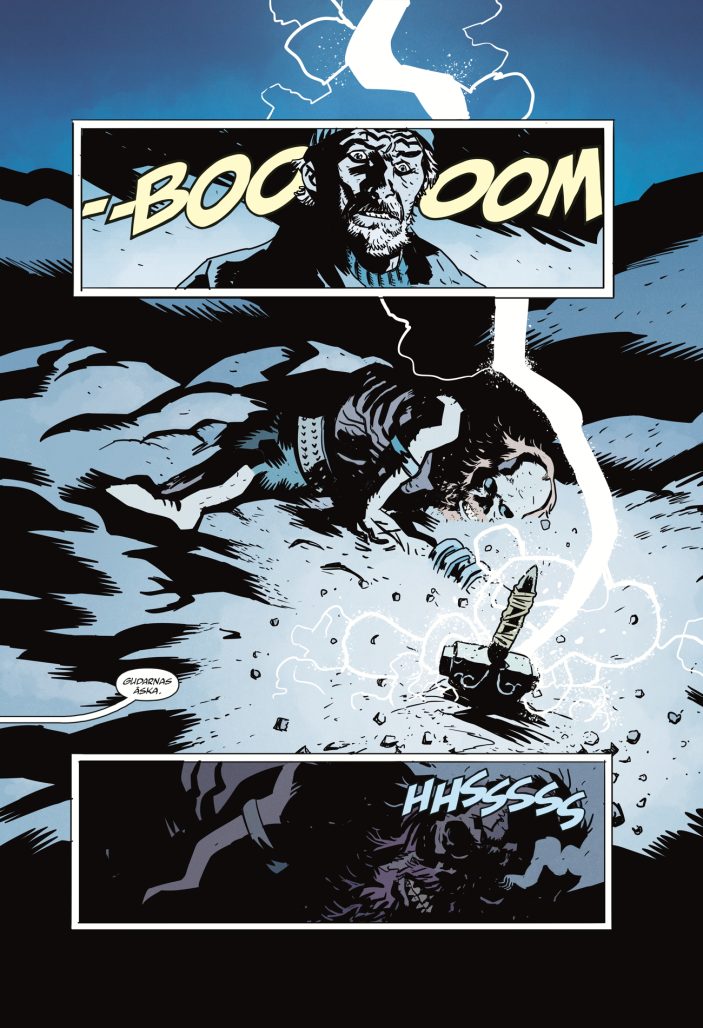
Simons: Did you have much opportunity to discuss with Christopher Golden and Mike Mignola about the adaptation? Did they make any suggestions or requests?
Smith: For suggestions and requests, not that I recall. The scripts were clear, and it was really just a matter of trying to do them justice. I had a couple of requests myself for some things here and there, like if I could have Hellboy wear this or have a supporting character look a certain way. But again, as I didn't handle the real work of the adaptation, these were purely visual choices.
Simons: What visual inspiration were you drawing upon for the book? Did you feel a need to conform to prior artistic interpretations? I note the style you use in the book is somewhat reminiscent of both creator Mike Mignola and Duncan Fegredo's take on Hellboy and his world, particularly in the character design aspect.
Smith: Mike's and Duncan's work are hugely influential. I re-read the Duncan-drawn Hellboy trilogy many times throughout for fuel. Usually if something, a Hellboy pose for instance, were tough and I thought I figured out a novel solution, I would later notice that Duncan already nailed something similar on a reread of one of his books, looking effortless and just right. I also re-read Peter Bergting and Ben Stenbeck's Mignolaverse books a bunch. They both have their own style, and yet fit perfectly in the Mignolaverse. Seriously inspirational artists. Overall I wanted this to feel like a classic Hellboy story while not laboring to adhere too closely to anything previous, as that can result in stiffening up a good deal. There was certainly no external pressure to do so. Mike's work is already fundamental to my understanding of drawing comics, so that's going to be there even in my previous non-Hellboy work. The rest is respecting the work that's come before, and trying to add some small part to what is already a very big and still-expanding Hellboy world.
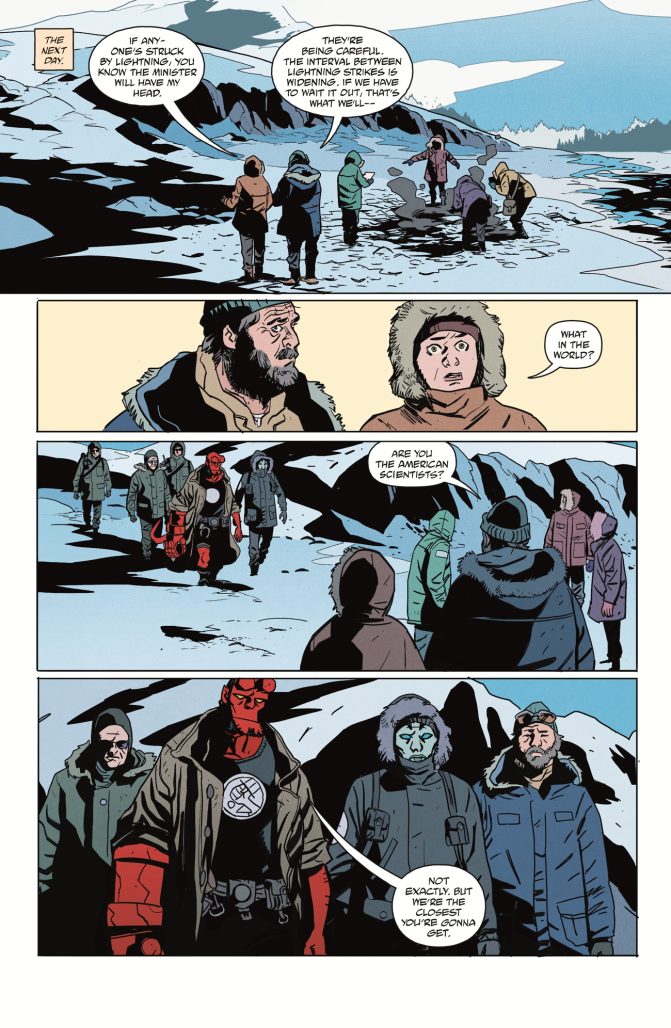
Simons: You have prior experience working on adaptations, working on collaborative projects as an illustrator, and producing your own whole-cloth graphic novel - do you have a preference? How do they compare for you?
Smith: They are different animals for sure, and it's hard to compare them. A real collaboration is a great experience, and so far I've been lucky enough to have had only those. I've heard some not-great stories, some pretty horrible ones actually. So, I am grateful that I've only worked with people who are open, clear, and want to do something cool. Obviously there's a real charm to working on a story entirely of your own. The initial plan for Barbarian Lord was to self-publish issues and bring them to local cons on an entirely irregular basis. There was zero thought about age range or if it would be entertaining or even make sense to anyone but myself, and that's a pretty freeing place to work from. Luckily, the publisher that got interested after the first issue came out [Clarion Books, imprint of Houghton Mifflin Harcourt Books' Young Readers Division] didn't have any interest in changing what I was doing, and so I went with them for the full storybook. All they asked was that I stop putting out any further issues of that story arc. It was kind of crazy, in a very good way, when I look back at it. That being said, it's very gratifying to be part of a small group, all bringing their best for a combined effort.
Simons: You released your solo graphic novel, Barbarian Lord, in 2014. How was that experience for you and are you planning on doing more solo work in future? What future projects do you have coming up?
Smith: Ah! I should read ahead on the questions, as I was getting into Barbarian Lord up there. It was a great experience, and I'd like to get back to him at some point. I had a second story idea for him written down a couple of years back that I still actually like. Another back burner project is a full-on fantasy realm/teen metalhead story that my friend Tom Pappalardo wrote, Metal Quest. We've done a little bit of groundwork on that one and the story really is excellent. I just finished a very short story since wrapping up The Bones of Giants, and am just getting started on another multi-issue series this week. Both of those have to wait a bit before I can talk about them, though.
Published by Dark Horse Comics, Hellboy: The Bones of Giants #1 (of 4) is out now digitally and in all good comic book shops.






No comments:
Post a Comment